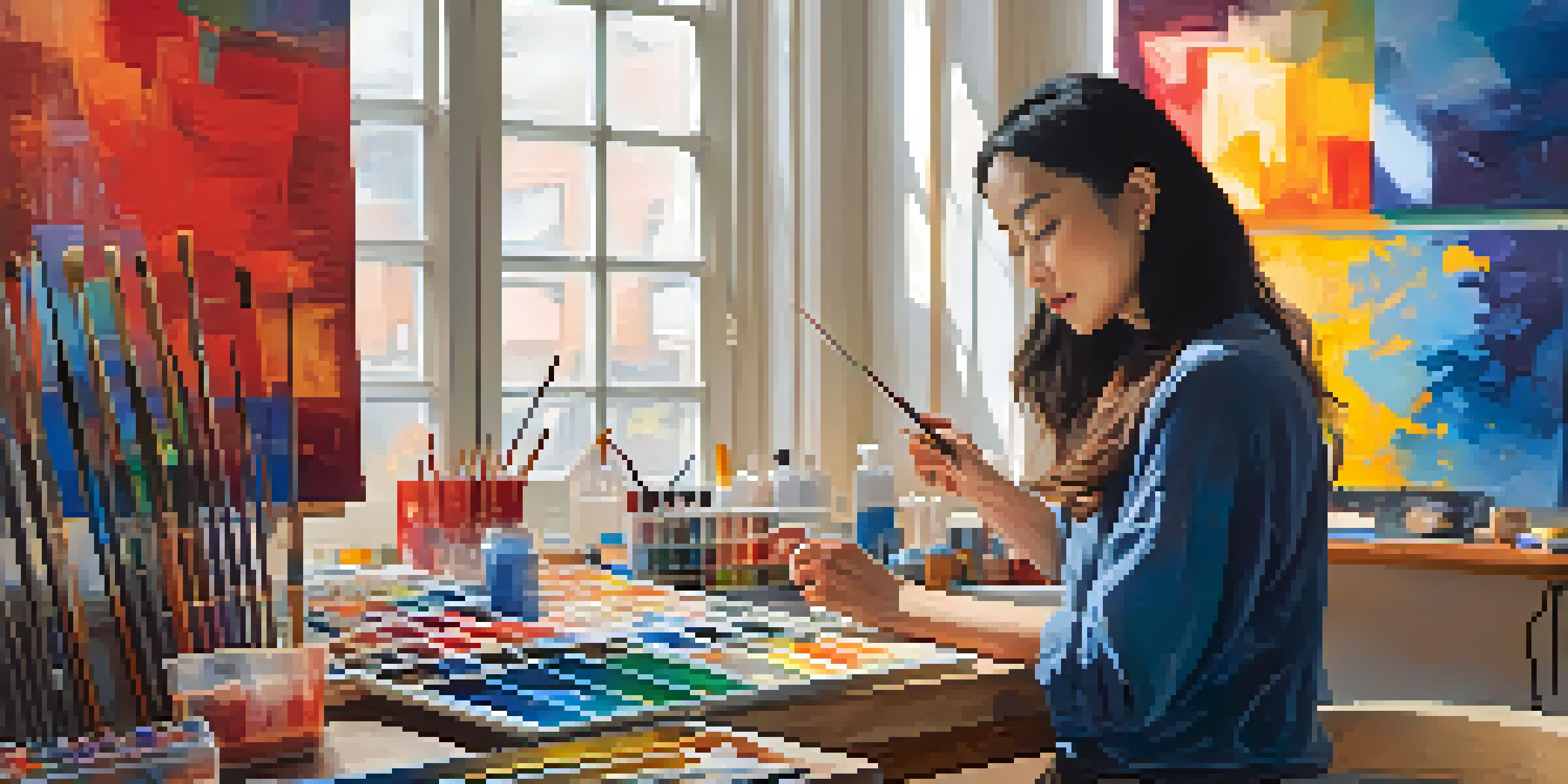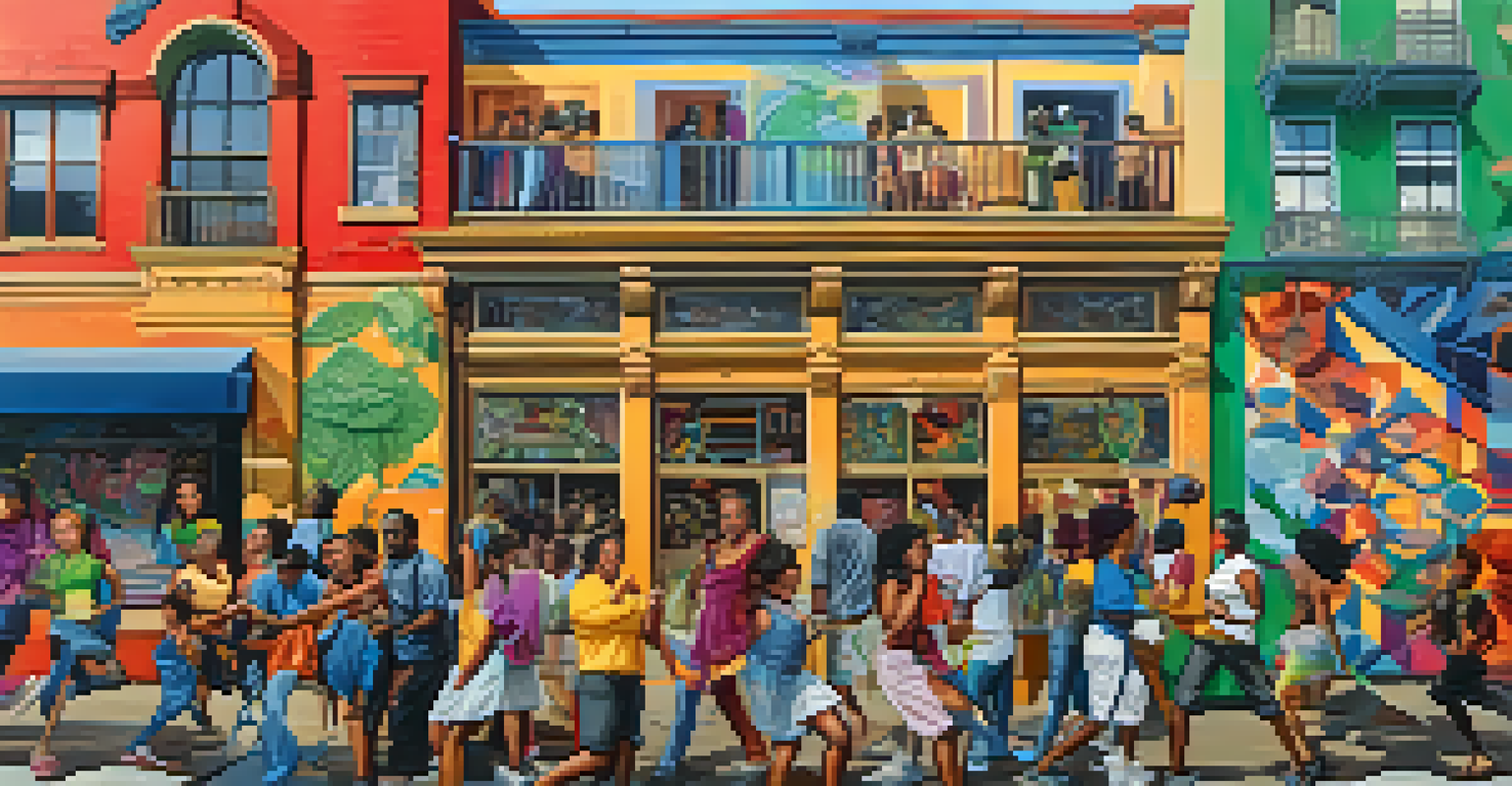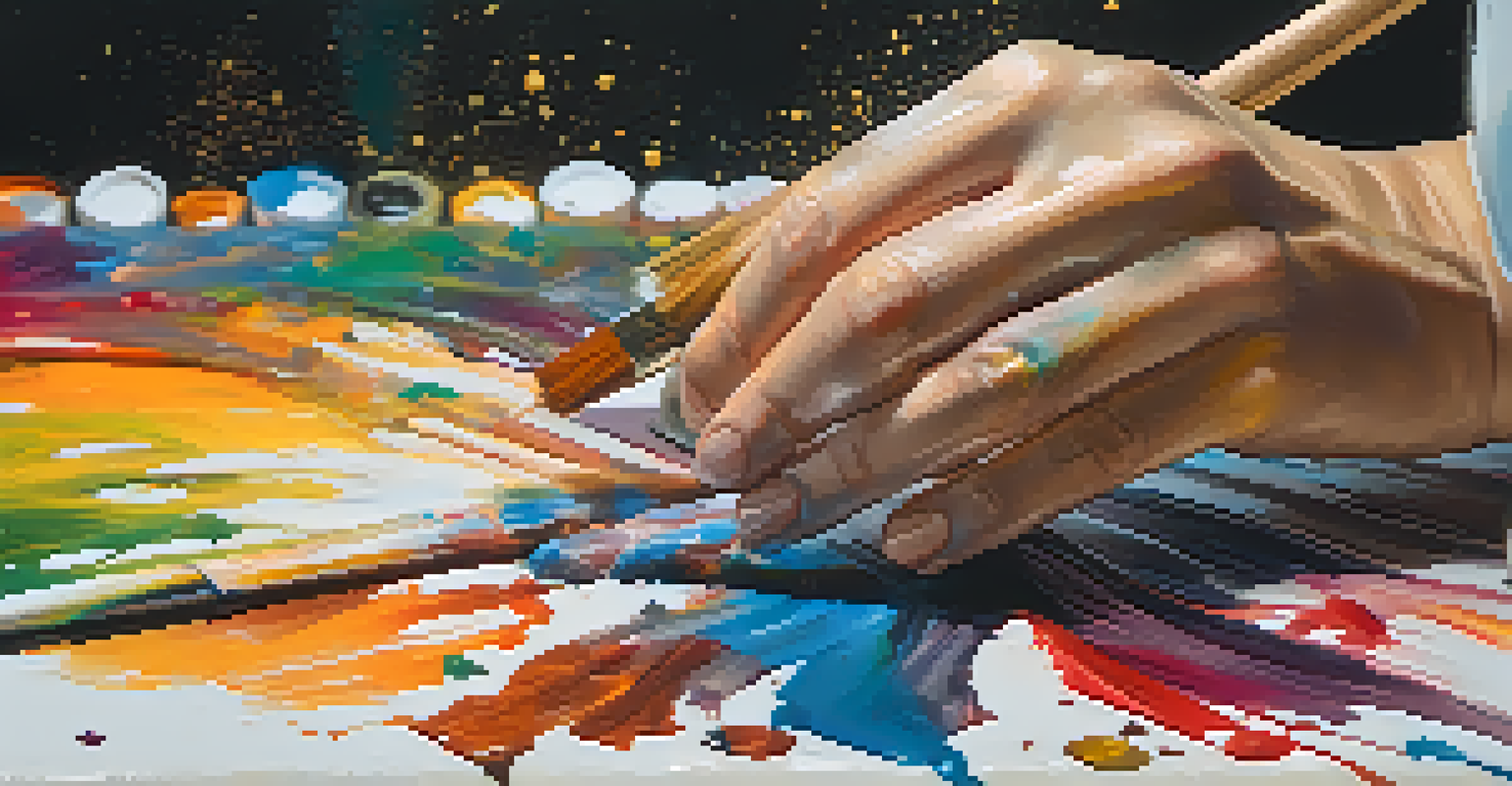Art and Identity: The Role of Self-Representation in Art

Understanding the Concept of Self-Representation in Art
Self-representation in art refers to how artists depict themselves or their identities through their work. This can encompass a range of elements, including personal experiences, cultural backgrounds, and social identities. By expressing who they are, artists invite viewers to connect on a deeper level, fostering empathy and understanding.
Art enables us to find ourselves and lose ourselves at the same time.
Art serves as a powerful medium for self-exploration and expression, allowing artists to communicate complex emotions and ideas that might be difficult to articulate otherwise. For instance, an artist might use color and form to reflect their feelings about identity, family, or society. This connection between creator and creation is what makes self-representation so compelling.
Moreover, self-representation can challenge societal norms and stereotypes, prompting discussions about identity that resonate with diverse audiences. When artists share their unique perspectives, they not only validate their own experiences but also open doors for dialogue about broader issues of representation and inclusivity in the art world.
The Historical Context of Self-Representation in Art
Throughout history, self-representation has played a crucial role in the evolution of art. Artists like Frida Kahlo and Vincent van Gogh used their personal struggles and identities as the foundation for their work, creating pieces that are both intimate and universally relatable. This historical context shows how personal narratives can shape artistic movements and influence cultural dialogues.

In the Renaissance, self-portraits became a popular way for artists to assert their identity and status. These works often reflected not only the artist's appearance but also their social standing and intellectual prowess. Over time, this practice evolved, allowing artists to explore identity beyond mere representation, delving into themes of gender, race, and personal experience.
Art Reflects Personal Identities
Self-representation in art allows artists to express their personal experiences and cultural backgrounds, fostering deeper connections with viewers.
As we moved into the 20th and 21st centuries, the conversation surrounding self-representation expanded dramatically. Contemporary artists often incorporate multimedia and performance art to engage with their identities in innovative ways, pushing boundaries and encouraging audiences to reflect on their own perceptions of self and others.
The Influence of Culture and Background on Artistic Identity
Culture and background significantly influence an artist's identity and the way they represent themselves in their work. Different cultural traditions can shape an artist’s approach, choice of medium, and thematic focus. For example, Indigenous artists often incorporate symbols and narratives that reflect their heritage, creating powerful connections between their art and cultural identity.
The role of the artist is to make the revolution irrefutable.
Moreover, cultural identity can provide a rich tapestry of experiences for artists to draw from. This diversity enriches the art world, as it allows for a variety of perspectives and stories to emerge. When artists share their cultural narratives, they contribute to a broader understanding of humanity, fostering connections across different backgrounds.
However, the interplay between culture and personal identity can also lead to tension. Artists may grapple with the expectations of their communities versus their individual expressions. This ongoing negotiation can be seen in the works of artists who challenge cultural stereotypes while still honoring their roots, illustrating the complexities of identity in art.
The Role of Social Media in Self-Representation
In today’s digital age, social media has transformed how artists engage with self-representation. Platforms like Instagram and TikTok allow artists to share their work and personal stories with a global audience, breaking down traditional barriers to visibility. This democratization of art means that more voices can be heard, enriching the tapestry of self-representation.
Social media also encourages artists to explore their identities in real-time, responding to current events and cultural shifts. For example, artists often use hashtags and trends to connect with larger conversations about identity, activism, and representation. This immediacy creates a dynamic space where art can evolve alongside societal changes.
Cultural Influence on Artistic Expression
An artist's cultural heritage significantly shapes their work, offering unique narratives that enrich the art world and promote understanding across diverse backgrounds.
However, while social media offers opportunities for connection, it can also present challenges. The pressure to curate a specific image or narrative can lead to conflicts between authentic self-representation and perceived expectations. Artists must navigate these complexities, balancing personal expression with the influence of online culture.
Art as a Tool for Social Change and Identity Exploration
Art has long been recognized as a powerful tool for social change, particularly in the realm of identity exploration. Artists often use their work to address social issues, challenge norms, and foster dialogue about identity politics. Through their creations, they can amplify marginalized voices and highlight injustices, sparking conversations that lead to greater awareness and understanding.
For instance, movements like Black Lives Matter have inspired countless artists to create works that reflect the struggles and triumphs of marginalized communities. These pieces often serve not only as expressions of identity but also as calls to action, urging audiences to reflect on their roles in advocating for change. This synergy between art and activism can be a catalyst for societal transformation.
Furthermore, art can also facilitate personal healing and identity reconciliation. Many artists use their practices as a form of therapy, exploring traumas and experiences that shape their identities. By sharing these narratives, they not only validate their own journeys but also provide solace and connection to others who may resonate with their stories.
The Intersection of Gender and Self-Representation in Art
Gender plays a significant role in self-representation within the art world. Female artists, in particular, have historically faced barriers that have influenced how they express their identities. Through their work, many women artists challenge traditional gender roles and explore themes of femininity, empowerment, and societal expectations, creating a dialogue that continues to evolve.
Artists like Cindy Sherman and Yayoi Kusama use their art to dissect notions of gender and identity, often pushing back against the male-dominated art narrative. Their work not only reflects personal experiences but also critiques societal norms, encouraging conversations about the representation of women and gender minorities in the art world.
Social Media Transforms Representation
Platforms like Instagram and TikTok empower artists to share their identities globally, creating a dynamic space for real-time exploration and dialogue about self-representation.
As discussions around gender identity become more prominent, the art world is witnessing a broader spectrum of self-representation. Non-binary and transgender artists are increasingly visible, using their work to explore and challenge binary notions of gender. This evolution enriches the dialogue around identity and representation, fostering a more inclusive art community.
Future Directions in Self-Representation and Art
As we look to the future, self-representation in art will undoubtedly continue to evolve. New technologies, such as virtual and augmented reality, are already beginning to shape how artists express their identities. These innovations offer exciting possibilities for immersive experiences that challenge traditional notions of representation and invite audiences to engage in new ways.
Furthermore, the ongoing conversations about diversity and inclusion in the art world are paving the way for more artists to share their unique perspectives. As the art community becomes increasingly aware of the importance of representation, we can expect to see a wider variety of voices and stories being told. This shift will enrich our understanding of identity and foster a more inclusive creative landscape.

Ultimately, self-representation in art is a dynamic and ever-changing conversation. It holds the potential to not only reflect individual identities but also to challenge societal norms and inspire future generations. As artists continue to explore and share their stories, they will undoubtedly shape the narrative of art and identity for years to come.